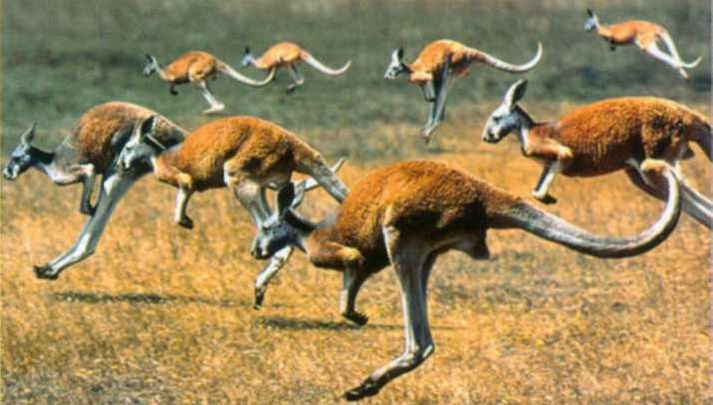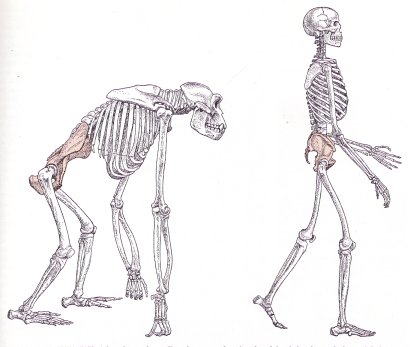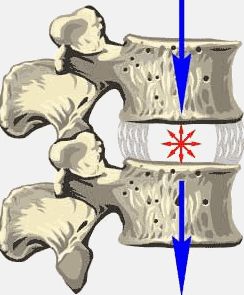Humans are the only orthograde species. Other creatures, even bipedal ones, tend to bend their body during movement.

The payback for hauty posture is indispensable pain in the back.
The cause of pain is the structure of the spine. Each vertebra is separated from another one with an elastic spinal disc. Animals support their weight on all four legs. Even apes, that are classified as having orthograde posture, use their arms to hold the posture.

In this slightly bent position, gravity does not affect the spinal discs. In humans, however, the whole weight of the body presses on the discs, compressing them. This causes painful constricted sensation and may lead to serious spine problems, like spinal hernia. That is when the disc is so compressed, it leaves its seating and pops on the side between the vertebra. This causes severe pain, as the discs press on the spinal cord nerves.

The obvious way to relax the spine and decompress the spinal discs is to ask a buddy to hold youunder the arms from the back, rise into the air and slightly jerk up and down. Besides looking as ridiculous as the description sounds, this is hard to archive, as in many cases our weight prevents most people from holding us in the air.
Thankfully, similar results may be achieved without that much exercise. The patient lies face one cheek down on a flat hard surface – a carpeted floor will do the best. The helper stands above with the patients’ body between the feet. Then, holding two fists on the sides of the spine, rapidly press with all your weight. The crack sound is the vertebra being decompressed. Follow all the the spine from up to the bottom, then repeat with the patients’ head turned to the other side. Warning! This is a potent procedure, so never press directly on the vertebra! Place your hands to the left and to the right from the spinal cord.
The feeling of lightness afterwards is perfectly normal. Repeat this regularly, and you’ll have a more relaxed spine.
